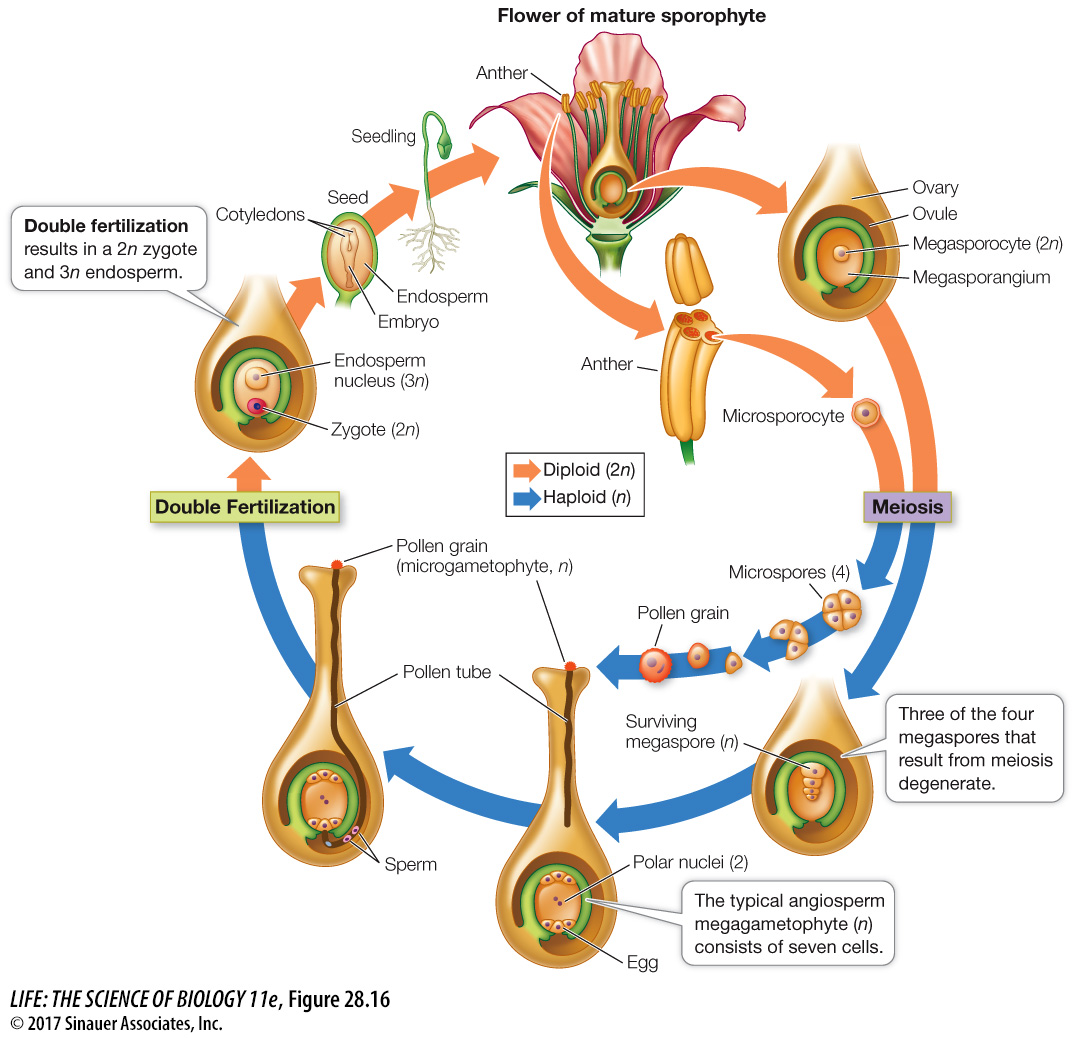The angiosperm life cycle produces diploid zygotes nourished by triploid endosperms
Like all seed plants, angiosperms are heterosporous. As you have seen, their ovules are contained within carpels rather than being exposed on the surfaces of scales, as in most gymnosperms. The male gametophytes, as in the gymnosperms, are pollen grains.
Pollination in the angiosperms consists of the arrival of a microgametophyte—

Animation 28.2 Life Cycle of an Angiosperm
In nearly all angiosperms, two male gametes, contained in a single microgametophyte, participate in fertilization. The nucleus of one sperm combines with that of the egg to produce a diploid zygote, the first cell of the sporophyte generation. In most angiosperms, the other sperm nucleus combines with two other haploid nuclei of the female gametophyte to form a cell with a triploid (3n) nucleus. That cell, in turn, gives rise to triploid tissue, the endosperm, which nourishes the embryonic sporophyte during its early development. This process, in which two fertilization events take place, is known as double fertilization. In some angiosperms, additional haploid nuclei are incorporated to form even higher ploidy levels in the endosperm, or the second sperm fuses with only one haploid nucleus, resulting in diploid endosperm.
As Figure 28.16 shows, the zygote develops into an embryo, which consists of an embryonic axis (the “backbone” that will become a stem and a root) and one or two cotyledons, or “seed leaves.” The cotyledons have different fates in different plants. In many, they serve as absorptive organs that take up and digest the endosperm. In others, they enlarge and become photosynthetic when the seed germinates. Often they play both roles.
The ovule develops into a seed containing the products of the double fertilization that characterizes angiosperms: the diploid zygote and a triploid endosperm (see Figure 28.16). The endosperm serves as storage tissue for starch or lipids, proteins, and other substances that will be needed by the developing embryo.